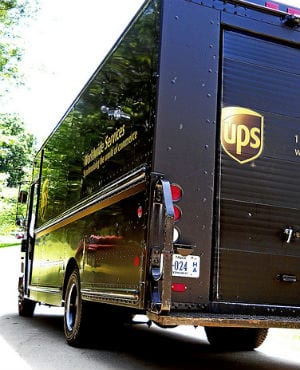 Customers today expect a level of immediacy, and for many field service companies, that’s meant a race to narrow service appointment times. The latest tactic? Same-day delivery service.
Customers today expect a level of immediacy, and for many field service companies, that’s meant a race to narrow service appointment times. The latest tactic? Same-day delivery service.
Amazon and eBay recently announced same-day deliveries in large metropolitan cities, upping the ante for immediate customer gratification. The jury is still out on whether this will be sustainable or not. Nevertheless, while having a blender show up at the doorstep by end-of-day may seem pretty different from repairing an HVAC system at a moment’s notice, the fact is that many of the same factors — dispatching, route planning, smart inventory systems — are at work in both cases. So what can field service organizations learn from retail delivery?
I spoke with Fiona Dias, chief strategy officer for ShopRunner, which says it brings together a network of retailers to deliver powerful shopping services, about how companies are to realizing same-day shipping, and what logistical roadblocks they still face.
Cost vs. Customer Satisfaction
Beyond simply raising the volume of delivery trucks going out the door every hour, Dias says the main key to shortening delivery times — without costing a fortune — is to maximize each delivery truckload. Unlike, say, a pizza delivery guy, who can afford to hit the road with only two or three pies, a UPS truck driver needs to have enough urgent deliveries in one area to make the cost of the trip worth it.
“The biggest issue is how many items can you shove in one truck?” Dias says. “If a driver can drop off 15 packages at 15 households in one run, it makes much more economic sense. That’s much harder to accomplish with same-day deliveries.”
Same-day shipping isn’t going to be cheap, then. Sucharita Malpuru, an analyst with Forrester Research, told the New York Times, “If you don’t care about losing a lot of money, sure, you can pull this off. The question is: Can you pull this off profitably? I’m not convinced.”
Would a field service company be willing to charge customers a little extra for a same-day or exact-time appointment? It’s worth considering.
Determining a Distribution Strategy
Dias says most retailers ship products one of three ways:
- Older companies like Sears use their own delivery trucks and drivers.
- Some companies like eBay crowd-source delivery services through a handful of courier companies.
- Others simply pay to use pre-existing shipping companies like UPS or FedEx, like Wal-Mart.
Wal-Mart, for instance, is testing same-day deliveries using UPS service. Customers need to place orders by noon in order to qualify for the same-day shipping — and even earlier on the West Coast. The key is that each store becomes its own miniature distribution hub. The back-end supply-chain and infrastructure are also shrunken down to the local level. An order comes in online, is routed to the store level, where a warehouse person pulls it off the shelf and packs it up. The deliveries are loaded onto UPS trucks and integrated into their daily routes.
The deliveries are being sent out directly from the stores, which act as miniature distribution centers, rather than relying on a single, giant warehouse. All same-day orders have a flat, $10 rate.
For now, both Wal-Mart and Amazon only offer the same-day shipping on certain, popular items, and in select markets. That allows companies to cheat a little bit, by loading up inventory on equipment they know they’re likely to need to ship quickly. Dias compared it to the day after the Super Bowl, when the NFL knows it’ll need to ship tons of T-Shirts out, but can’t actually know which ones to ship until the very last minute.
“As long as you know it’s going to happen, there are ways to prepare for it,” she says. “It it comes completely out of the blue, they can’t scale up. It becomes a same-day ‘maybe,’ not a same-day guarantee. Any time you’re dealing with compressed timeframes, it affects infrastructure and inventory.”
But if you’re not a big box company like Walmart, the simple cost of creating supply-chain systems capable of working on an individual store level, paying for the labor of stocking trucks and driving delivery routes clouds the benefit.
“There’s a lot of excitement in the press about same-day shipping,” Dias says. “But I think if you asked someone at Wal-Mart if they think same-day shipping will be big down the road, they’ll say no. I don’t think anyone thinks this is how it’s going to work in a few years.”
More: Why Meeting Service Appointment Windows Is Critical for Success.
Additional reporting by Ian A. Stewart

Share this: